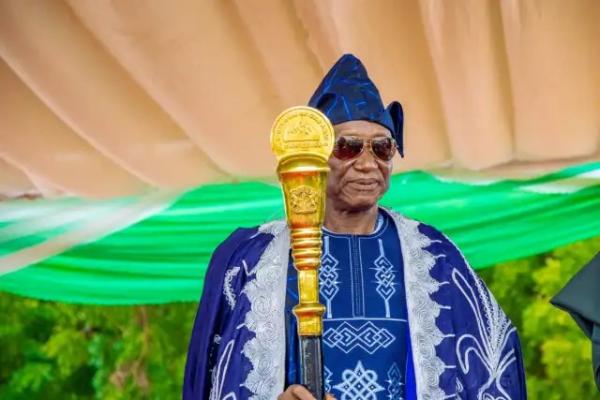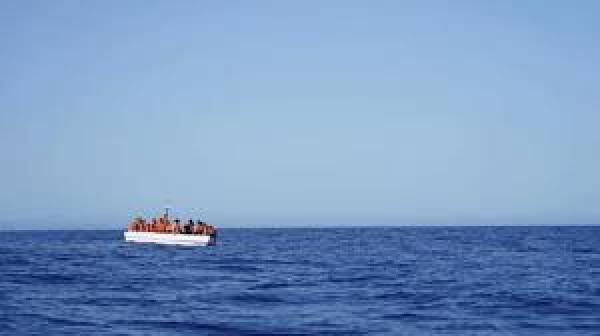
The Maasi tribe is a Kenyan tribe of Lion Hunting warriors! They are experts in killing lions.
The Maasai people of East Africa live in southern Kenya and northern Tanzania alongside the Great Rift Valley on semi-arid and arid lands.
The Maasai occupy a total land area of 160,000 square kilometers with a population of approximately one and a half million people.
The Maasai society is comprised of sixteen sections: Ildamat, Ilpurko, Ilkeekonyokie, Iloitai, Ilkaputiei, Ilkankere, Isiria, Ilmoitanik, Iloodokilani, Iloitokitoki, Ilarusa, Ilmatatapato, Ilwuasinkishu, Kore, Parakuyu, and Ilkisonko, also known as Isikirari (Tanzania’s Maasai).
There once was Iltorobo section but was assimilated by other sections. A majority of the Maasai population lives in Kenya.
Sections such as Isikirari, Parakuyu, Kore, and Ilarusa lives in Tanganyika.
It is widely speculated that the Maasai’s ancestors originated in North Africa, migrating south along the Nile Valley where they arrive in Northern Kenya in the middle of the 15th century.
They continued southward, conquering all of the tribes in their path, extending through the Rift Valley and arriving in Tanzania at the end of 19th century.
As they continued to migrate, they attacked their neighbors and raided cattle. By the end of their journey, the Maasai had taken over almost all of the land in the Rift Valley as well as the adjacent land from Mount Marsabit to Dodoma, where they settled to graze their cattle.
The Maasai can be recognized by the special red cloth they wear which is called a Shuka. Maasai people live a nomadic life, which means they move from place to place with their animals.
Maasai people look rather peculiar. They pierce their earlobes and stretch them by wearing large, heavy earrings. They wear a lot of colorful beaded jewelry on their body. Women and children shave their heads.
It is estimated that over one million Maasai lives in Kenya and Tanzania.
The Maasai deserve a mention because of their very interesting and rich culture as well as a variety of believes-some will make you laugh and others will make you gasps.
Aside from having a multi-various interesting culture, the Maasai lives near popular African tourist sites like Serengeti, Massai Mara, Ngorongoro, Amboseli, and Tarangire game reserves, hence making them a tourist tribe as well.
While there are many thriving tribes throughout the African continent, the Maasai are one of the most interesting and successful. A colorful and proud people, the Maasai provide a real and interesting glimpse into what life may have been like in East Africa centuries ago. Long-standing traditions and deep-seeded beliefs permeate this captivating tribe and they continue to breathe life and character into the African plains that they call their home.
Below is a list of Fascinating facts, bizarre believes and practices about these interesting people of Africa. This information includes where the Maasai live, what their lifestyle is like, and how they survive.
The Maasai believe God has given them all the cattle in the world.
This makes cattle rustling a matter of taking back what belongs to them.
Cattle play an important role in Maasai life. It is their primary source of food.
A man’s wealth is measured in terms of cattle he owns and children he has.
The Maasai are semi-nomadic which is a result of their raising cattle and the need to find new grazing land.
The Maasai tribe has a deep, almost sacred, relationship with cattle. They are guided by a resilient belief that God created cattle especially for them and that they are the sole custodians of all the cattle on earth. This bond has led them into a nomadic way of life following patterns of rainfall over vast land in search of food and water for their large herds of cattle.
At times referred to as “people of cattle”, The Maasai place a very high worth on cattle and other livestock and use it as both a form of internal currency and a means of obtaining goods outside such as clothing, beads, grains and uniform and school fees for children.
Cattle dominate everything from culture to social relationships to symbolism and language. Livestock is frequently traded for milk, siege, cash and other livestock and close familial ties are established through cattle exchange.
9. The piercing and stretching of earlobes is a common practice of the Maasai.
One of the key features of a Maasai tribesman is an extensively pierced ear. The opening is so wide that it can cause a serious infection or tear the ear apart!
Different materials are used to pierce and stretch the ear lobe and include thorns for piercing, twigs, stones and even empty film canisters to extend the ear lobe!
The Maasai tribes of Kenya have used ear stretching to change their appearance for quite a long time now.
Ear stretching may have been performed in various ways within the tribe: most times weight is used to stretch earlobes; other times it is the size of the piercing that brings about the stretching.
The Maasai peoples would elongate their piercings by using larger and larger pieces of stone, wood, tusk, thorn and at times, sometimes even film canisters.
The older members of the tribe often had more elongated piercings than younger members, since safe stretching can take many years. This may have made having larger spaced lobes a sign of age and wisdom.
8. The Maasi do not bury their dead.
Traditionally these people of Africa do not bury their dead. Burials are believed to harm, contaminate the soil and is reserved only for some chiefs. Most dead bodies are simply left outside for scavengers.
When someone dies outside their hut, they are to be left there. Additionally, they are to have grass or leaves thrown on them and this process continues with the addition of rocks.
This also occurs when someone dies inside their hut, but they are to be moved outside of it.
A good person is determined by leaving the body to be devoured by Hyenas, if the body is not devoured, then the person is determined to be good.
If the body is not eaten, then there must be an animal sacrifice to make up for the person being bad. Prayers are said to the good corpses. After the funeral practices, there is a funeral banquet to eat the animal that has been sacrificed.
The Maasai differ largely from the other cultures due to the fact that the purification of the body seems to be of no relevance to the Maasai, unlike how it was to the other cultures.
The Maasai believed more in only respecting those who were good in their lifetime, rather than preserving them for an afterlife.
Additionally, although there is no concept of draping the body at all, leaves are placed on the body, so there is a sense of covering the corpse, in a more natural state. [2]
7. The Maasai believe in one god named Enkai or Engai.
The Maasai believe in one god named Enkai or Engai. He has a two-sided
nature; one called Engai Narok ( The Black God) who is benevolent, and the other Engai Nanyokie (The Red God) who is vengeful.
Like other African religions, the Maasai have a deep belief that one high god (Enkai) created the world, forming three groups of people.
The first were the Torrobo (Okiek pygmies), hunting and gathering people of small stature to whom God gave honey and wild animals as a food source.
The second were the neighboring Kikuyu, farmers to whom God gave seed and grain. The third was the Maasai, to whom God gave cattle, which came to earth sliding down a long rope linking heaven and Earth.
While the Torrobo were destined to endure bee stings, and the Kikuyu famines and floods, the Maasai received the noble gift of raising cattle.
A Torrobo, jealous of the Maasai’s gift of cattle, cut the “umbilical cord” between heaven and Earth. For many Maasai, the center of their world remains their cattle, which furnish food, clothing, and shelter.
6. They drink cow blood.
Although the Maasai do not often eat beef; they eat milk and drink blood which is gotten by puncturing the loose flesh on the cow’s neck with an arrow.
The mainstay diet of the Maasai people in Kenya and Tanzania is derived mostly from their cattle.
Most Kenyan interior villagers in the event of famine drink cow blood to survive.
On special occasions, such as when a person is circumcised, gives birth or is sick, the Maasai people may drink cattle blood as it is considered to be good for the immune system. Additionally, the elders of the tribe often use cattle blood to alleviate intoxication or hangovers after a night of drinking alcohol.
They do this by inserting a tube-like bamboo structure into the jugular veins of cows and suck the blood out of it. They also make sure that the animal does not die in the process.
5. Their houses are made of cow dungs.
The Maasai live in a kind of circular kraals. These Kraals also serve as enclosure for their cattle and livestock. These kraals are made up of prickly thorns which is impregnable by lions that are a constant threat to their cattle.
Maasai houses are loaf shaped and are made of mud, sticks, grass, cow dung and cow’s urine. Quite unique indeed!! Women are incharge of making the houses while men are incharge of making kraals.
Maasai living conditions seem primitive by western standards. Nevertheless, the Maasai are generally proud of their simple lifestyle and do not seek to replace it with a more modern lifestyle.
Nevertheless, the old ways are changing. Formerly, cowhides were used to make walls and roofs of temporary homes during migrations. They were also used to sleep on.
Permanent and semi-permanent homes resembling igloos were built of sticks and branches plastered with mud, and with cow dung on the roofs. They did not have windows and leaked a lot.
Nowadays, tin roofs and other more modern materials are gradually transforming these simple dwellings.
4. The Maasai hunt lions.
While most of us will literally freak out at the sight of a lion, but for the Maasai Lion hunting is a sport! It is a Show of bravery. They kill lions to show their bravery.
Killing lions is a tradition handed down to the Maasai. The warriors do not hunt the lion for pleasure or trophy. For them, it is a symbolical rite of passage.
Although Lion hunting among the Maasai was a predominant activity of the past, they are still hunted today when they mauled the Maasai livestock.
The lion hunting game is about personal assignment, goal and dedication. The game is based on your personal background, environment and culture.






















